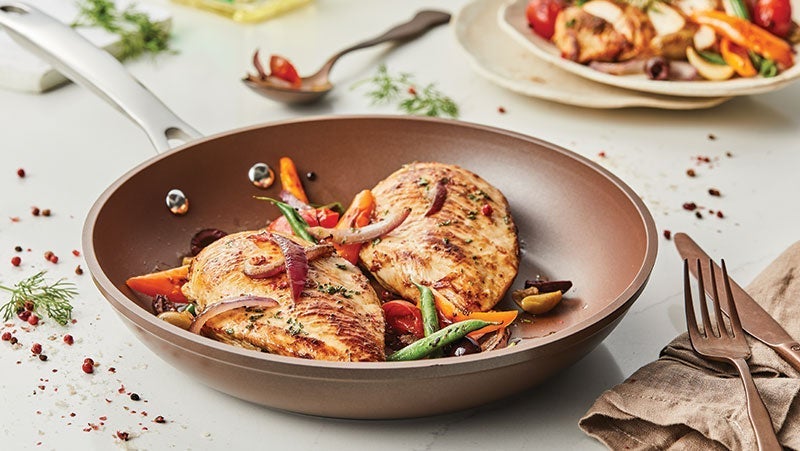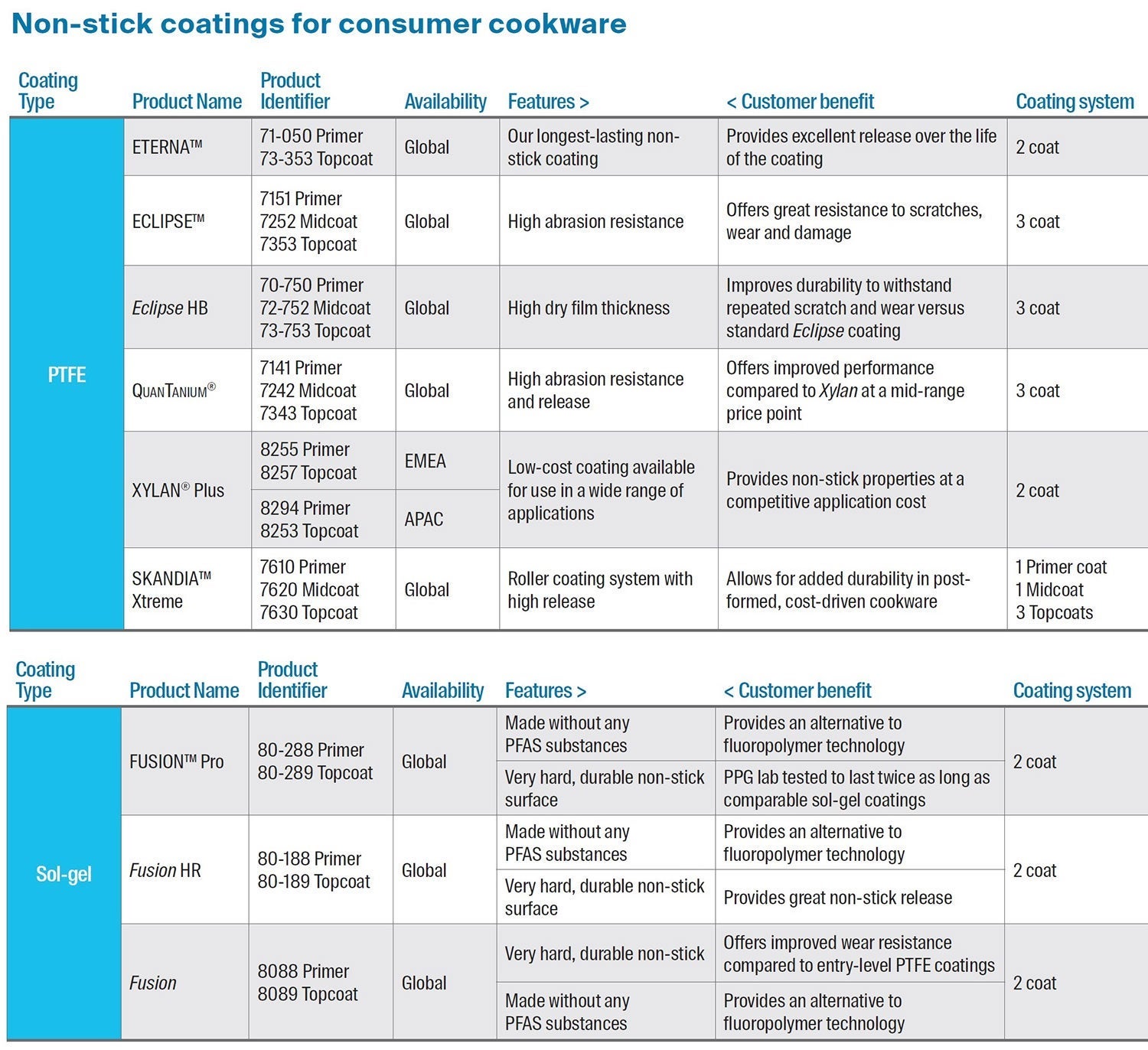When it comes to cookware and bakeware, there is no shortage of options on the market with products in every size, color and style. Most cooks, from novices to culinary connoisseurs, base their purchasing decisions on finding the best balance of price and performance to fit their needs.

It's common for manufacturers to have a portfolio of cookware at a variety of price points. Whether a product is considered economy or premium depends on how they are constructed, including the quality of materials used, and how well they perform on factors like food release, scratch resistance, even heating, cleaning and durability based on product testing. But testing methodologies and standards vary widely.
For most industries, testing standards are set by ASTM International, formerly known as the American Society for Testing and Material, but ASTM standards do not apply to niche products like non-stick coatings.
PPG is a member of the Consumer Bakeware Alliance that does publish engineering and testing standards, but they are not uniformly used across the industry, leaving testing to the discretion of individual manufacturers and coatings makers.
Setting the Testing Standards for Non-stick Coatings
Every cookware manufacturer and coatings company have their own sets of tests. PPG uses a specific round of rigorous tests for non-stick coatings, along with customer-specific testing.
"Our customers trust us to conduct testing on their behalf," explained Kurt Mecray, a 30-year industry veteran who is heavily involved in testing of PPG's cookware and bakeware coatings as a technical manager. "As a leader in testing, we often recommend our specific methods first, but of course, are open to other test methods based on customer preferences."
Perfecting the Test
Today, PPG's non-stick testing methodologies are among the most rigorous in the industry. They were first developed by Whitford Worldwide, a company acquired by PPG in 2019 that specialized in low-friction and non-stick coatings. Kurt was one of the key employees who came to PPG through the acquisition.
Whitford's extensive and arduous testing methods helped to establish the company as a global leader in non-stick coatings for housewares.
The testing work for PPG's kitchen and industrial bakeware business is done at one of seven labs around the world: two based in the U.S. with others in South America, Asia and Europe.
PPG's testing methods are engineered to ensure that PPG coatings not only maintain their non-stick performance for an extended period, but also to measure how well they fare against other leading brands, comparative data that is immensely helpful to both PPG and its customers.
This commitment to the most robust methods has resulted in a test matrix for housewares that is highly regarded as the standard across the industry. In fact, it is common for independent labs to refer to PPG tests in third party documentation.
Non-stick Coatings Performance Tests
For non-stick coatings for consumer and industrial cookware, abrasion, thermal shock, chemical-resistance and adhesion testing are common. The specific testing regimen used, however, depends on whether the non-stick coating is formulated with sol-gel ceramic technology or polytetrafluoroethylene (PTFE), one of the most widely used PFAS compounds.

